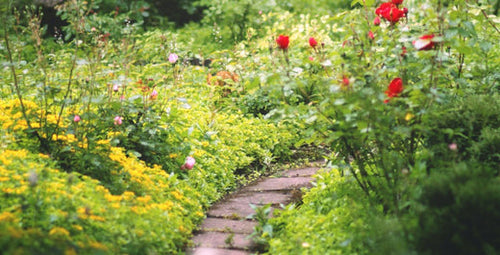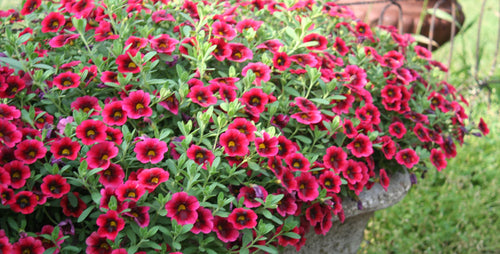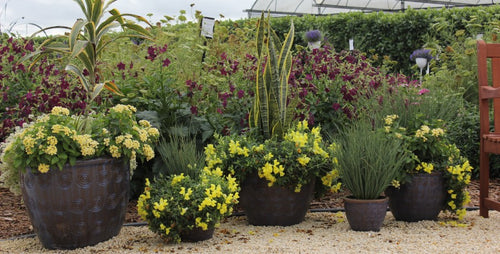 Whenever I shop for container plants, I always look for varieties with texture as well as color. That’s because plants with fuzzy, fleshy, or spiky foliage add an extra level of interest to any pot or planter. They’re also fun to work with as you tuck them into the soil.
Whenever I shop for container plants, I always look for varieties with texture as well as color. That’s because plants with fuzzy, fleshy, or spiky foliage add an extra level of interest to any pot or planter. They’re also fun to work with as you tuck them into the soil.
Plants with narrow, spiky foliage provide a strong architectural element to any container. I like to include at least one of these in every pot for interest and drama. Some top picks include: agave, red hot poker, blue fescue, juncus, kangeroo paw, and cordyline.
Fuzzy-leaved annuals and perennials often have a pungent odor when you brush against them. I like the fragrance, but luckily deer and rabbits avoid these plants so you never have to worry about hungry wildlife devouring your creation. Some of my favorite fuzzy leaved plants are lavender, yarrow, catmint, dusty miller, lamb’s ears, and geranium.
In the container at left, the finely divided, fuzzy leaves of French lavender are as fragrant as they are gorgeous. They mix perfectly with the slightly hairy foliage of tradescantia and red-leaved coleus. A soft mound of baby’s tears completes the scene.
And don’t forget plants with thick, fleshy leaves. These little gems look terrific paired with both fuzzy- and spiky-leaved flowers. Their thick foliage also retains water, making them ideal for hot, dry situations. Some of my favorites include portulaca/purslane, kalanchoe, sedum, and hens and chicks. As a bonus, most of them are low growing so they also make superb edging plants.

In the ornate concrete planter at left, fuzzy leaved plectranthus and kalanchoe are teamed with the more pointed foliage of aeonium and aloe. The smooth, fleshy leaves of portulaca, hens and chicks, and sedum round out the mix.
Of course, the key to success with any planter combination, especially during the summer, is good hydration. Containers dry out a lot faster than your landscape, so a daily watering is a must. I use a spray wand attached to my garden hose to apply a gentle, steady stream of moisture. To feed my plants I mix up a dilute solution of liquid plant food in a watering can and apply it every 10 days through the spring and summer.
Written by Doug Jimerson

















